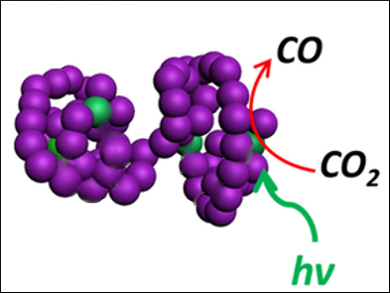Artificial photosynthetic systems are inspired by nature and attempt to mimic metalloenzymes such as carbon monoxide dehydrogenase to capture and convert CO2. However, these systems so far lack a key feature: the secondary coordination sphere needed to stabilize the transition metal active site and its direct coordinating ligands.
To create this environment, Alfredo M. Angeles-Boza, Jie He, University of Connecticut, Storrs, USA, and colleagues have functionalized a linear copolymer (poly[methylmethacrylate-co-hydroxyethyl methacrylate]) with thiols using an esterification reaction of hydroxyethyl methacrylate and 3-mercapto-propionic acid. Upon addition of nickel chloride, an intramolecular coordination occurs, which is triggered by metal-thiolate bond formation. This drives the individual polymer chains to fold and produce a “metallofoldamer” (pictured).
The Ni-metallofoldamers have shown promising activity and selectivity for CO2 photoreduction. According to the researchers, the approach could provide useful guidelines in the investigation of artificial enzymes and further the understanding of proteins in photosynthesis.
- “Enzymatic” Photoreduction of Carbon Dioxide using Polymeric Metallofoldamers Containing Nickel-Thiolate Cofactors,
Srinivas Thanneeru, John K. Nganga, Alireza Shirazi Amin, Ben Liu, Lei Jin, Alfredo M. Angeles-Boza, Jie He,
ChemCatChem 2017.
DOI: 10.1002/cctc.201601661




